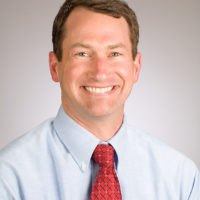By Rob Monger, MD
A colleague of mine recently told me that he wouldn’t mind being a few years younger except that it would mean that he would have to practice medicine a few years longer which he couldn’t stand.
Lots of physicians these days are burned out. A Medscape survey of U.S. physicians done in 2013 found an overall burnout rate of 40 percent, and a follow up Medscape survey in 2017 showed that the overall rate is now 51 percent, with the highest rates found in emergency medicine (59 percent), OB/GYN (56 percent), and primary care physicians such as family medicine and internal medicine (each at 55 percent). As a group, surveys find that female physicians are somewhat more burned out overall (55 percent) than male physicians (45 percent).

A common definition of physician burnout is the combination of emotional exhaustion, interpersonal disengagement, and a diminished sense of personal accomplishment. According to the 2017 Medscape survey the leading causes are too many bureaucratic tasks, spending too many hours at work, feeling like just a cog on a wheel, and the increased use of electronic health records.
Has it always been this way? Have physicians always been this burned out but nobody thought to ask about it until a few years ago? When I talk with retired doctors they say that the current degree of physician burnout is a relatively new phenomenon. Maybe it was just simpler times, or the old guys looking back with rose-colored glasses, but the retired docs I know seem to have enjoyed their careers much more than many of my current colleagues are.
When did things change? Physicians point to the implementation of EHR’s over the past 5-10 years as the main thing that changed the practice of medicine for the worse, and they may be right. Most physicians went into medicine to take care of patients, but one recent study found that physicians who see patients in a clinic now spend 50 percent of their day entering data into an EHR, and another study found that physicians spend about two hours on EHR and desk work for every one hour of direct face-to-face time with patients. And because many clinicians click buttons but don’t dictate their notes many medical records are now hundreds of pages long but don’t convey much information. I sometimes tell people that if I ever decide to quit medicine and do something else that I’m well qualified to work at a giant warehouse: I’ve got so much experience doing computerized data entry that my skill set is easily transferrable to work as an inventory clerk.
Besides EHR issues what else drives physician burnout? A brief discussion in the physician lounge one day quickly generated a long list of other issues including patient satisfaction surveys, seemingly endless quality reports that don’t mean much in the real world, insurance authorization hassles, and complicated requirements for pay-for-performance reporting, to name a few.
Why does physician burnout matter? Should all of us just suck it up, quit complaining, and plan for early retirement? The answer is that burnout matters because it affects patient care. There is significant and growing research that shows that physician burnout leads to lower quality of patient care. Burnout also causes physicians to work less than full time and to retire early which exacerbates physician shortages in places like rural Wyoming. Burnout also leads to acting out: I’m just finishing a two-year term as Chief of Staff at Cheyenne Regional Medical Center and I’ve seen first-hand that burnout is often the root cause of physician disruptive behavior.
What is to be done about this epidemic of physician burnout? An excellent article about burnout in a recent edition of the NEJM Catalyst (April 26th, 2017) identifies three domains that are each important for promoting physician well-being including personal resilience, efficiency of practice, and a culture of wellness. The article also emphasizes that well-being is not the same as simply the absence of burnout; the World Health Organization defines well-being as an optimal state of physical, mental, and social well-being. Many physicians I know are nowhere close to that definition of well-being.
Fortunately, in recent years there has been increasing recognition of just how prevalent physician burnout is, and many groups such as the American Medical Association as well as many state and specialty societies are starting to provide resources for physicians to address the issue. Additionally, many hospitals and health systems have now started to develop formal physician wellness programs and support groups.
At the Wyoming Medical Society Annual Meeting at Jackson Lake Lodge in June there were two lectures about physician burnout, and in this issue of Wyoming Medicine we are featuring the topic. We hope that increased awareness of physician burnout will help speed up the process of developing solutions.
Many of us trained in an era when it was a sign of weakness if you didn’t work 30+ hours straight, go days at a time without much sleep, and work seven days a week including every weekend and holiday. We were taught to deny ourselves in the name of patient care. But as it turns out modern research has conclusively shown that physicians are human beings, and as such we need time to take care of ourselves. Addressing physician burnout is critically important for each one of us, for our families, and for our patients.
